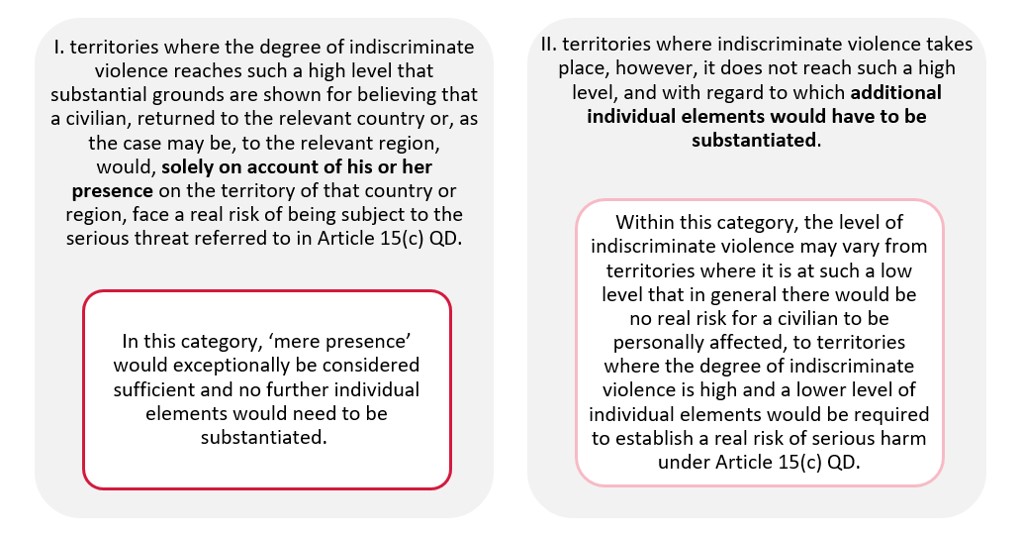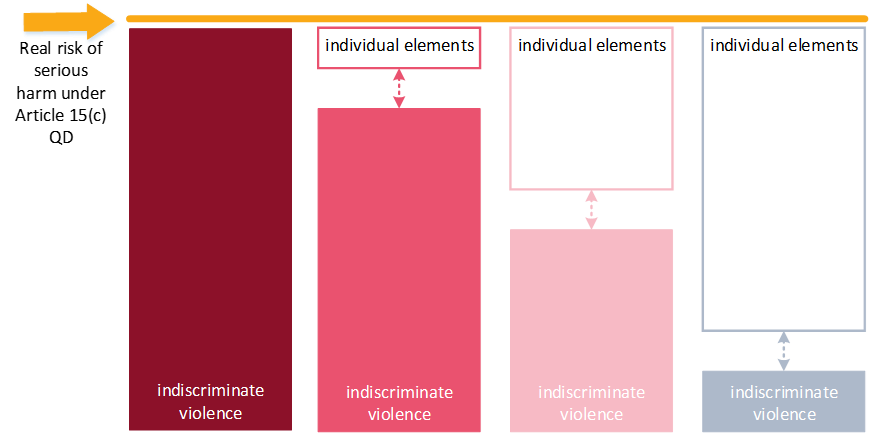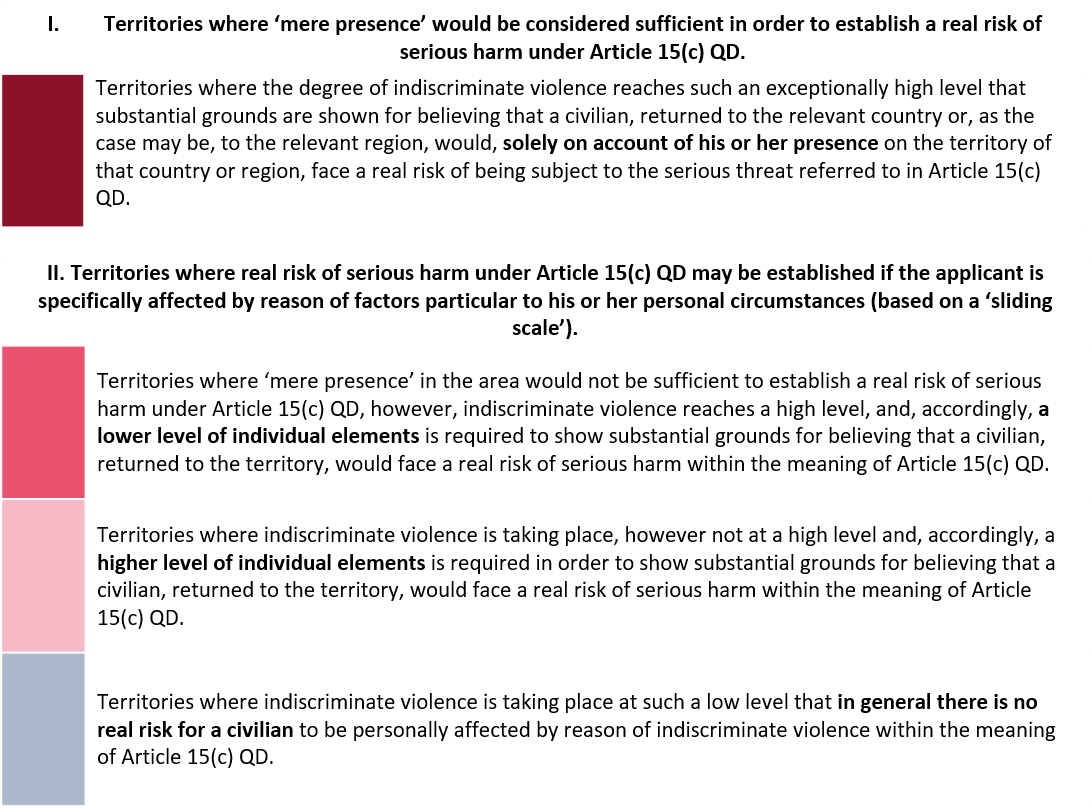‘Indiscriminate violence’ refers to the source of the specific type of serious harm defined in Article 15(c) QD. The CJEU in Elgafaji notes that the term ‘indiscriminate’ implies that the violence,
may extend to people irrespective of their personal circumstances.[34]
Some acts of violence may be indiscriminate by their nature, for example: (suicide) bombings, attacks and armed confrontations in areas that are inhabited or frequented by civilians (e.g. marketplaces, public roads, healthcare facilities).
Based on Elgafaji, in situations where indiscriminate violence is taking place, the following differentiation can be made with regard to its level: [35]

With regard to the second category, Elgafaji provides guidance on how the serious and individual threat has to be assessed, an approach commonly referred to as the ‘sliding scale’:
(…) the more the applicant is able to show that he is specifically affected by reason of factors particular to his personal circumstances, the lower the level of indiscriminate violence required for him to be eligible for subsidiary protection.[36]
Risk-impacting elements related to the personal circumstances of the applicant should, therefore, be taken into account. See subsection on Serious and individual threat.
The graph below illustrates the further differentiated standard scale applied in country guidance with regard to the different levels of indiscriminate violence and the respective degree of individual elements required in order to find that a real risk of serious harm under Article 15(c) QD is substantiated for the applicant:

The different levels of indiscriminate violence can be described as follows:

It should be noted that in armed conflicts the targeting of civilians may have nexus to one of the reasons for persecution according the refugee definition. Therefore, refugee status may be granted as noted in the section above (see, for example, the profiles Persons perceived to be associated with ISIL, Individuals perceived to oppose ISIL, Religious and ethnic minorities, and stateless persons). Such targeted violence, furthermore, would not be considered ‘indiscriminate’.
![]() Continue with the sub-section on indicators of indiscriminate violence.
Continue with the sub-section on indicators of indiscriminate violence.
[34] Elgafaji, para.34. [back to text]
[35] Elgafaji, para.43. [back to text]
[36] Elgfaji, para.39. [back to text]
